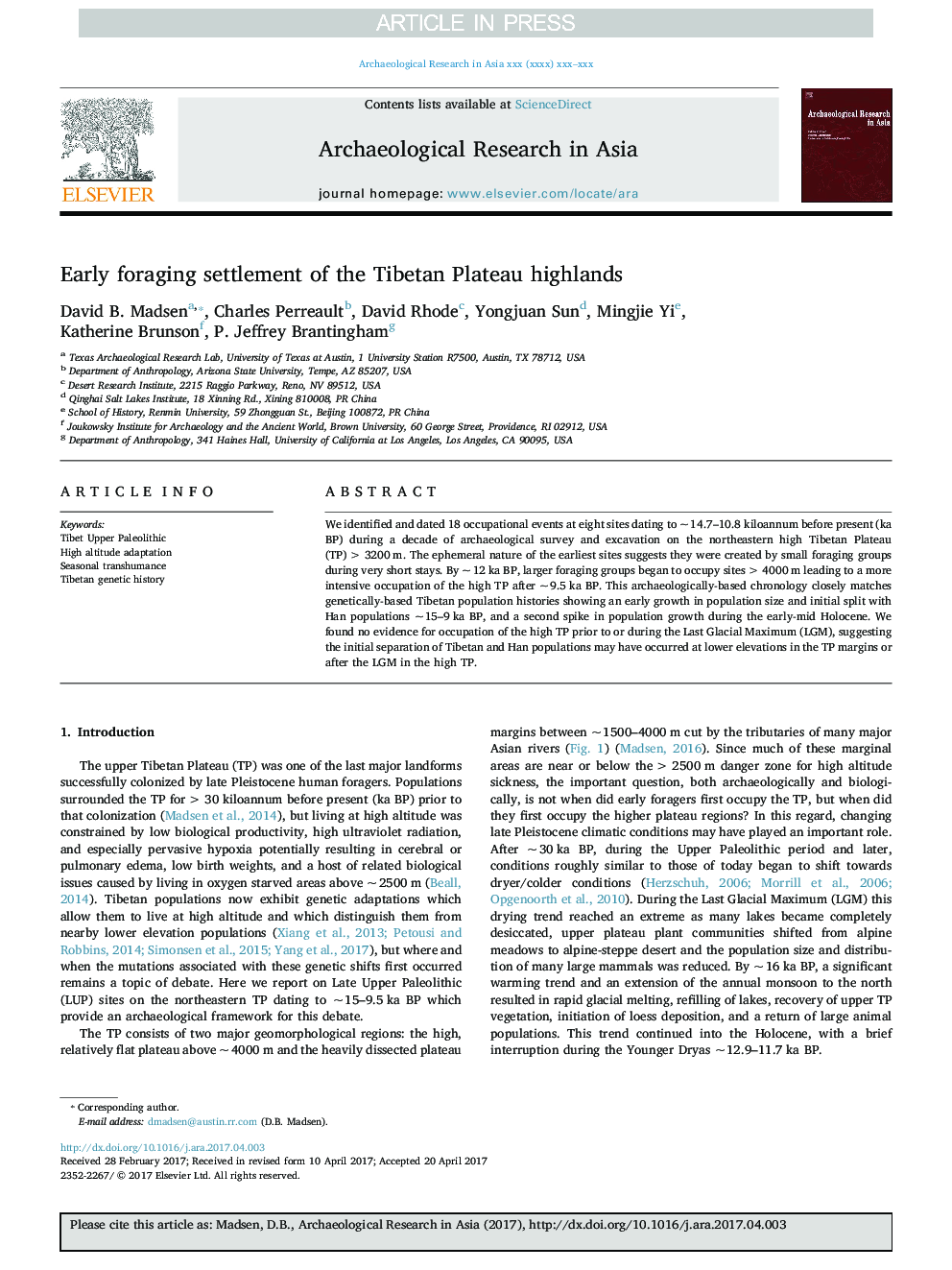| Article ID | Journal | Published Year | Pages | File Type |
|---|---|---|---|---|
| 5111874 | Archaeological Research in Asia | 2017 | 12 Pages |
Abstract
We identified and dated 18 occupational events at eight sites dating to ~Â 14.7-10.8Â kiloannum before present (ka BP) during a decade of archaeological survey and excavation on the northeastern high Tibetan Plateau (TP) >Â 3200Â m. The ephemeral nature of the earliest sites suggests they were created by small foraging groups during very short stays. By ~Â 12Â ka BP, larger foraging groups began to occupy sites >Â 4000Â m leading to a more intensive occupation of the high TP after ~Â 9.5Â ka BP. This archaeologically-based chronology closely matches genetically-based Tibetan population histories showing an early growth in population size and initial split with Han populations ~Â 15-9Â ka BP, and a second spike in population growth during the early-mid Holocene. We found no evidence for occupation of the high TP prior to or during the Last Glacial Maximum (LGM), suggesting the initial separation of Tibetan and Han populations may have occurred at lower elevations in the TP margins or after the LGM in the high TP.
Keywords
Related Topics
Social Sciences and Humanities
Arts and Humanities
History
Authors
David B. Madsen, Charles Perreault, David Rhode, Yongjuan Sun, Mingjie Yi, Katherine Brunson, P. Jeffrey Brantingham,
